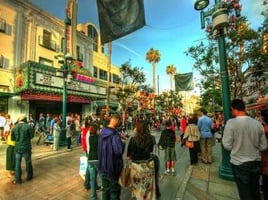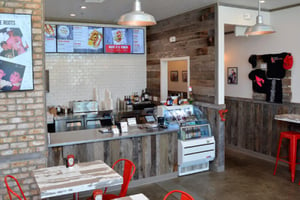So Target announced the other day that they would raise their starting pay to $15/hr by 2020. At first blush, I found this news surprising. Retail is often one of the lowest paying sectors of the economy, and $15/hr equates to $30,000/year, which in many areas is a living wage.
But really, the move is not as radical as it seems. Target has raised its minimum wage to $11/hr this year, following a pattern of $1/hr raises for the past several years. If Target were to do the same thing for the next three years, their starting wage would be $14/hr in 2020 anyway.
Perhaps they figured, why not get some good publicity for something we'll probably have to do anyway? And if we don't it for some reason, is that going to stop anyone from shopping at our stores?
Because let's face it, most of us when we shop retail aren't thinking about the wages of the employees. We just hope we can find someone when we need them. For years, Wal-Mart has been the subject of complaints about low wages and labor practices, yet it has become and remains the largest retailer in the world.
As the world of retail changes, and commodity shopping moves online to operators like Amazon with unlimited selection and low overhead, retailers are faced with a dilemma. Either they can cut prices to match what's online, and accordingly cut wages and services in their stores, or they can try to compete on elements other than price.
Target is a low-price retailer and competes with Wal-Mart. However, rather than always trying to be lowest price, they have chosen to be competitive on price and to be a leader in other areas, such as design.
As we enter the "new world" of retail, things like design and the consumer experience become more important. Nordstrom has opened a store without merchandise, devoted instead to services. Capital One is opening coffee shops.
How do these factors tie together? Well, first of all, increasing wages are not a bad thing. This means that employees are being paid wages they can actually survive on, no longer needing government assistance. And higher paid workers are good for the economy, as Henry Ford well knew.
Do higher wages mean higher priced goods and services? Maybe, but it's not a straight line. Higher wage costs means retailers have to generate more sales per employee, so they have to either:
- reduce the number of employees
- increase sales velocity
- raise prices
- change their merchandise mix, or
- some combination of all four of these things
In the case of Target, they have been focused for some time on being a bit "higher end" than Wal-Mart, and having dealt with Target in a different life, I can testify that they do not oppose price increases from vendors in the same as Wal-Mart does. Similarly Costco, which is also known for paying its workers well, focuses on higher-end merchandise (albeit at a discounted price).
What does all this mean for the independent retailer? I think it goes back to the basics:
- Selling items that other people don't sell, or doing it in a way that is different and compelling.
- Well-trained employees that make shoppers feel comfortable
- Store environments that highly functional, but also inviting
Here at F.C. Dadson, we can help you with #3. Feel free to browse our free resources or contact us to arrange a complimentary consultation.
Topics: retail industry news, target, walmart, costco






.png?width=203&height=142&name=IFA%20Member%20Logo%20EPS%20(1).png)
.png%20for%20web.png?width=203&height=94&name=2022_VetFran_Logo%20(002).png%20for%20web.png)
.png?width=203&height=150&name=ICSC-logo-tag-full-color%20(1).png)